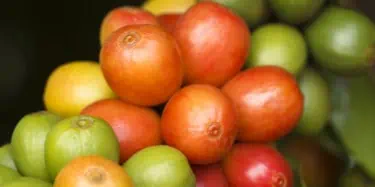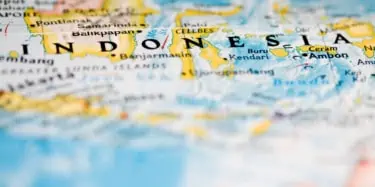Snobs are people who make judgments for non-intrinsic reasons. Like brands for example (Starbucks is great, Starbucks sucks), or market ideologies (corporate coffee is bad, coffee from tiny stores with a roaster in the back are good), or on the basis of various other untested assumptions. We try to be anti-snob at Coffee Review by tasting coffees blind and honestly reporting on our findings, even
Readers’ Nominations
Perhaps we can take this annual cupping of coffees nominated by our readers as a kind of informal sampling of the state of specialty coffee based on the People’s input. At least a very small part of the People. If so, this early 2011 sampling provokes the following (strictly organoleptic-dotal and non-scientific) trends and observations. Conclusion one: The taste for darker roasted coffees has
African Intensity: Yirgacheffe, Sidama and Environs
When we taste our way into the world of southern Ethiopia wet-processed coffees -- the most famous names are Yirgacheffe and Sidamo or Sidama -- we enter a special and different sensory world than the one to which most North American coffee drinkers are accustomed. These coffees, produced largely from heirloom varieties of Arabica that are hardly grown anywhere else in the world, display intense
Inside Ratings and Coffee Review
Readers occasionally call Coffee Review to task for rating coffees too high. (On the other hand, others ask why we've never rated a coffee higher than 97. That latter question I’ll save for another time and another blog.) But in response to those harboring the “too high” suspicion, the first thing I would point out is that in general we only publish reviews of coffees that exceed 87 or 88. That
Prize-Winning Coffees from Latin America
The story this month may be more about what’s not reviewed here than what is. As in years past, we planned a review of competition-winning green coffees offered to North American consumers. These competitions are events "during which a jury of international cuppers spends several well-caffeinated days slurping, spitting and obsessing over a gradually narrowing group of fine coffees from a given
Learning from Chocolate: The Pairing Experiment
A few weeks ago I took a few steps across a relatively new frontier of coffee connoisseurship known generally as “pairing,” i.e. recommending certain coffees that best pair with certain foods. Although I’ve always found the pairing process interesting, I’ve never pursued it in any depth. But when I was offered an opportunity (in this case a modestly paid opportunity) to attempt to pair coffees
More Coffee Aroma/Flavor Notes: Flowers and Aromatic Wood
Flowers and aromatic wood situate at opposite ends of the sensory range for coffee, though they both are among the most common and attractive of aroma and flavor notes. Floral notes appear to be a direct expression of the floral tendencies of the coffee fruit and seed; at times they show up as pure expressions of the perfumy, jasmine-like scent of the coffee flower itself. Those new to coffee
Resuming with Sweetness
So let’s blog again like we did last summer. Reviewing three or four descriptive terms per week is the new plan. Judging by an occasional puzzled email, sweetness may be one of the more confusing terms for those new to coffee description. We use the term regularly in our reviews, and it’s one of the most important technical descriptors used in evaluating quality in green coffee. Yet readers
Brandy and Surprises: The New Naturals
For those unfamiliar with the emerging language of fine coffee the title of this article may be a puzzler. What’s a “natural” and what makes some of these “naturals” “new”? Natural is a positive name marketing-savvy Brazilians came up with some years ago to describe coffees that until that time were called “unwashed” or “dry-processed.” These are coffees consisting of beans that were dried
Quiet Distinction: Coffees of Guatemala
Guatemala is a tease of a coffee origin in sensory terms. It would be very difficult in a blind cupping to pick out any of the coffees we reviewed this month with absolute certainty as Guatemalas if they were mixed in with, say, other Central Americas. Yet all twelve of this month’s samples clearly share certain quiet but pervasive commonalities: balanced acidity (seldom overbearing or sharp),
Tall-Drink Espressos: Best Blends for Big Milk
One old-time coffee generalization certainly got shot down by this month’s reviews: the notion that the way to get pronounced espresso flavor in large (i.e. caffè latte-sized) volumes of hot milk is to roast the hell out of the coffees. The idea used to be that the burned pungency of darker roasted coffees would cut through the sweetening, muffling impact of the milk better than medium roasts,
Summer Selections: Coffees of Note
Coffee writers need vacations too. What we offer here in place of our usual monthly tasting report is a set of reviews of exceptional coffees that came into the Coffee Review lab during July 2010. The article originally scheduled for August (Tall Milk Espressos) will appear next month. In a sense, this fill-in-for-Ken's-vacation article is a roaster's choice exercise. The roasting companies
Pity the Poor Decaf Drinker: Signature Decaf Blends
I am a positive thinker when it comes to coffee, but this month's sampling of fifty decaffeinated blends from thirty of North America's finest specialty roasters tested my optimism. Almost every month our reviews reveal impressive new coffee possibilities powered in part by a fresh generation of specialty coffee roasters and coffee producers. Typically our monthly surveys turn up multiple samples
Making Sense (or Not Making Sense) of Words for Roast Color
Pawel, in a recent response to my blog “Boomeranging to Super Light Roasts,” asks whether he should order his favorite coffee, a Sumatra Takengon Gayo Organic from the Aceh region, at “City+” or a somewhat darker “Full City.” He answers his own question, quite correctly I think, by writing that there is only one way to find out, and that is by trying both versions. But his response reminded me
Along the Andes: Coffees of Ecuador, Bolivia and Peru
The short version is simple: Three coffee origins with massive growing elevations and substantial plantings of traditional varieties of Arabica but with little to no presence in the specialty coffee world suddenly provide us with fifty-three largely impressive, often distinctive coffees. For years Bolivia, despite ideal, very high-altitude terroirs and plantings of the old and respected Typica
Boomeranging to Super Light Roasts
It occurred to me again as we were cupping five beautiful single-origin samples from two of the leading new-paradigm roasting companies (call them third wave , fourth wave – whatever wave we’re on now) that some of these exciting, ground-breaking roasting companies may be edging toward, well, too light a roast. What an irony – even five years ago in the San Francisco Bay Area, where I live you
Micro to Macro: Southern California Coffees
This month's cupping of forty-two coffees from seventeen southern California roasters hints at a drama that is currently enlivening the coffee scenes of other American metropolises: Newer, smaller roasting companies that put more focus on medium-roasted small lots of precisely sourced coffees are pressing older, often larger companies that produce darker-roasted versions of more generic origins
Mysterious No More: Sumatra Coffees
Ever since specialty coffee pioneer Alfred Peet popularized Sumatra coffees on the menu of his famous Vine Street store, their pungently fruity, earthy/musty profile has attracted a loyal following among American coffee lovers. Along the way they have been regularly tagged "mysterious," a word also often applied to the seldom-visited Indonesian island they come from. Well, mysterious no more, or
Island Coffees: Hawaii and the Caribbean
This month's reviews consider coffees from two famous island growing regions -- Kona and the Blue Mountains of Jamaica -- together with a handful of coffees from less famous island origins: Puerto Rico, Haiti, the Dominican Republic, plus a scattering of non-Kona Hawaii coffees. The conclusions, rather sadly, are predictable for coffee insiders but perhaps a surprise for more casual coffee
Report from Kenya: The Ruiru 11 Controversy
As part of a just completed trip to Kenya, I visited some farms and coops in the classic Kenya growing regions northeast of Nairobi. Before arriving at the coffee, however, we enjoyed a day’s run past giraffes, rhinos and other impossible creatures around Lake Nakuru, a lake particularly famous for the clouds of flamingos that turn the pale blue water of the lake pink with their reflections. Not




























